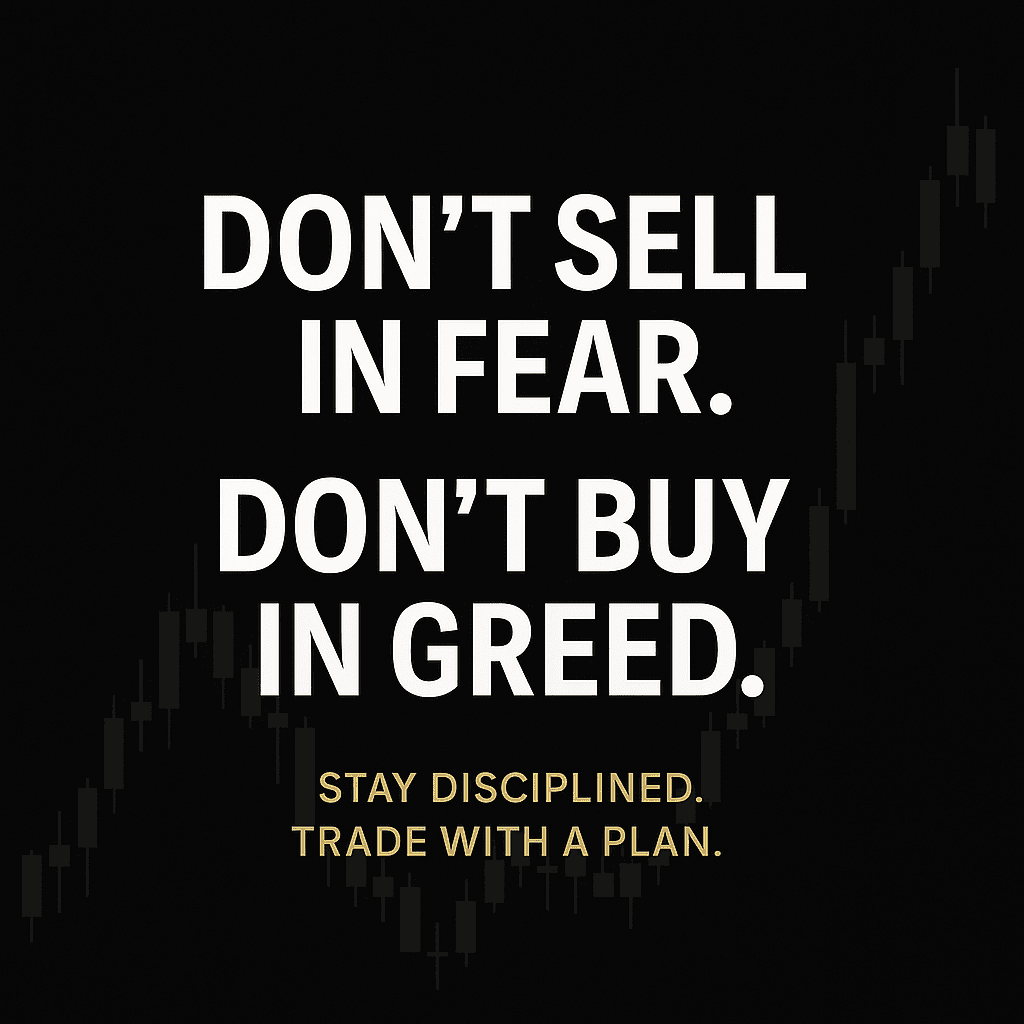Don't sell with fear, don't buy with greed: The golden rule for successful trading
In the volatile world of financial markets, where prices constantly fluctuate, traders face challenges not only in understanding charts or following economic news, but also in an internal battle with powerful human emotions like fear and greed. These two hidden forces, invisible on any chart, can turn profits into losses and promising opportunities into disappointment.
The essential truth here: trading success depends not only on technical knowledge, but also on the ability to control emotions.
This truth is summed up in a simple yet profound golden rule: “Don’t sell with fear, and don’t buy with greed.”
It's not just advice, but a comprehensive trading philosophy that calls for self-discipline, risk management, and decision-making based on analysis rather than emotion. This rule distinguishes professional traders who are able to achieve sustainable profits from those who succumb to market emotions.
In this article, we explore in-depth the meaning of this rule, analyze the impact of fear and greed on trading, and provide practical strategies to help you build a balanced mindset and make more informed trading decisions.
---
1. Fear and Greed: The Hidden Enemies
Behind every trading decision is a constant struggle between logic and emotion. Although markets may appear to be arenas for numbers and analysis, they are, at their core, a reflection of the emotions of millions of participants. Here, fear and greed emerge as the strongest drivers of irrational behavior.
Fear in Trading: A Specter That Dissipates Profits
Fear is a natural response to risk, but in trading, it can be a deadly obstacle. When prices fall rapidly, fear drives traders to panic sell their assets, even if it means incurring significant losses. This often occurs at market lows, missing out on the opportunity to capitalize on the subsequent rebound.
Fear also prevents some traders from entering profitable trades for fear of losing, thus missing out on valuable opportunities.
Greed: The illusion of quick wealth
On the other hand, greed leads traders to buy at price peaks, driven by the desire to catch gains (FOMO). This behavior contributes to the growth of bubbles, which later burst, leaving significant losses. Greed may also push traders to hold on to winning trades for longer periods in the hope of making more, losing the profits when the market reverses.
Fear and Greed Index
To assess these sentiments, the Fear & Greed Index was developed, which measures market sentiment from 0 to 100.
Low values mean "extreme fear" and may indicate buying opportunities.
High values mean "extreme greed" and may reflect an imminent correction.
Understanding this indicator helps traders view the market objectively, free from the influence of emotion.
---
2. Meaning of the Golden Rule: Do not sell with fear and do not buy with greed.
This rule is the essence of self-discipline in trading.
"Don't sell in fear":
Panic selling often occurs at bottoms. A professional trader takes a moment, assesses the fundamentals of the asset, and adjusts their strategy based on data, not emotions.
Example: If you buy a stock at $100 and it drops to $60 due to temporary news, then sell it out of fear, the price may later rise back above $100, and you will have lost capital and missed the opportunity for recovery.
"Don't buy greedily":
Buying at price peaks for quick profits often leads to losses with the first correction. A successful trader waits for calculated entry points and avoids chasing the market.
---
3. Steps to transform from an emotional trader to a strategic trader
Create a clear trading plan: including your goals, entry and exit points, and stop-loss and take-profit orders.
Rely on analysis: technical to identify trends, and fundamental to assess the true value of an asset.
Apply risk management: Do not risk more than 1-2% of your capital on a single trade.
Use stop-loss and take-profit orders: to limit the influence of fear and greed.
Practice discipline and patience: Avoid overtrading or impulsive decisions.
Accept losses: as a natural part of the trading process, and learn from them.
---
4. Practical tools and strategies
Portfolio diversification: to reduce risk.
Use market indicators: such as RSI and MACD to identify overbought or oversold areas.
Periodic performance analysis: Reviewing past transactions to understand mistakes and improve performance.
Patience and calm: Wait for opportunities and don't chase the market without a plan.

5. Conclusion
Trading isn't a battle against the market, it's against yourself. Fear and greed are your biggest enemies, and controlling them is the key to success.
By following the rule of "don't sell with fear, don't buy with greed," and relying on a solid trading plan and strict risk management, you will be able to build a more stable and profitable trading career.
#tradingtechnique #MyTradingStrategy #BiananceSquare #Write2Earn!